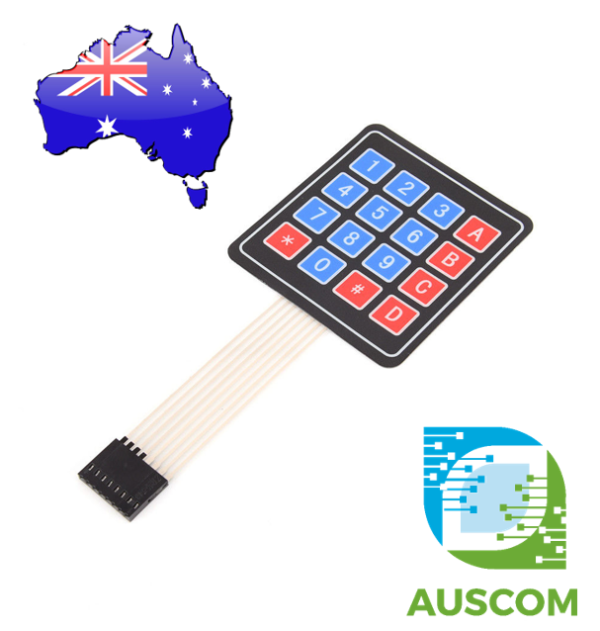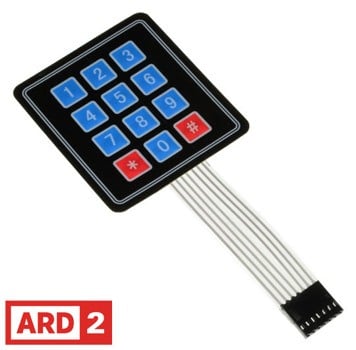Exploring the Different Types and Features of a Membrane Switch
Exploring the Different Types and Features of a Membrane Switch
Blog Article
The Advantages of Using Membrane Layer Switches Over in Consumer Electronics
Membrane buttons are progressively identified for their considerable advantages in consumer electronics, particularly in improving customer communication and improving production processes. Their capability to supply user-friendly interfaces and responsive feedback can greatly minimize user mistakes, while their light-weight building and simplified manufacturing actions add to cost-effectiveness and quicker market access. Additionally, the versatility in style permits for tailored remedies that satisfy varied consumer requirements. The ramifications of these advantages expand beyond plain functionality, hinting at a transformative capacity for the future of digital devices. What more advantages might become this modern technology develops?
Boosted Individual Experience
In today's affordable landscape of consumer electronic devices, boosted customer experience is paramount; almost 85% of customers focus on intuitive interfaces. Membrane changes play a vital duty in achieving this level of functionality.
The responsive comments given by membrane switches is necessary for leading individual actions, making certain that commands are signed up properly. This comments mechanism enhances and decreases errors customer contentment, cultivating a favorable relationship in between the gadget and the user. In addition, the adjustable nature of membrane switches over allows manufacturers to tailor user interfaces to certain customer needs, making tools extra available and welcoming.
Additionally, membrane switches can incorporate backlighting and visuals overlays, better boosting exposure and usability in diverse settings. This versatility makes certain that gadgets stay practical and easy to use, no matter of the setting. Overall, the integration of membrane layer switches right into consumer electronic devices dramatically enhances individual experience, driving brand loyalty and fulfillment in an increasingly open market.
Cost-efficient Manufacturing
Customer electronics manufacturers are continuously seeking methods to balance top quality with cost, and membrane layer buttons use a compelling service for economical production. membrane switch. These elements are inherently easier than standard mechanical switches, which decreases both production costs and complexity. The lightweight layout of membrane layer switches over permits lower shipping expenses and much easier assimilation into small tools, further improving their charm in a competitive market

Manufacturers can create membrane buttons in high volumes, capitalizing on economic climates of scale. This automation capability guarantees constant top quality while significantly lowering per-unit costs. Additionally, the products made use of in membrane layer buttons, such as polyester and polycarbonate, are frequently more economical than those needed for traditional button innovations, contributing to total expense savings.
The production procedure for membrane switches over commonly needs fewer steps and less labor compared to other switch types. This streamlined strategy not just conserves on labor prices however also speeds up time-to-market, allowing firms to respond quickly to customer need. The combination of lowered material costs and reliable production procedures placements membrane switches over as a smart financial investment for suppliers aiming to provide high-quality customer electronics at competitive cost factors.
Design Adaptability and Modification
While typical mechanical switches usually enforce limitations on style as a result of their bulk and called for mounting devices, membrane buttons provide unrivaled flexibility and customization options for customer electronic devices. This visit here innovative modern technology allows developers to create sleek, inconspicuous user interfaces that can perfectly incorporate right into different product visual appeals, from mobile phones to kitchen area home appliances.
Membrane buttons can be generated in basically any kind of form or size, enabling manufacturers to tailor the layout to specific ergonomic and functional needs. This adaptability not only enhances individual experience but also enables artistic styles that align with brand identity. Furthermore, the usage of printed graphics on membrane switches uses the possibility for elaborate styles and lively colors, which can be easily changed without considerable expense effects.
Furthermore, membrane layer buttons can incorporate several performances right into a solitary layer, reducing the requirement for numerous parts and streamlining setting up processes. This streamlined design strategy decreases space and weight, making it optimal for compact consumer electronics. Generally, the design versatility and customization abilities of membrane layer switches equip producers to introduce, ultimately bring about more straightforward and interesting products.
Longevity and Reliability
As innovation proceeds to evolve, the toughness and dependability of membrane layer buttons have actually become vital factors to consider for suppliers in the consumer electronics industry. Membrane switches are created to hold up against severe ecological problems, consisting of temperature changes, dampness, and dust direct exposure. Their robust building and construction typically involves multi-layered products that offer an effective obstacle versus impurities, ensuring longevity and regular performance.
Along with environmental resistance, membrane switches deal remarkable mechanical reliability. Unlike standard mechanical buttons, which may put on out in time, membrane changes utilize a sealed design that minimizes the danger of mechanical failure. The lack of moving components not only improves their life-span yet additionally minimizes deterioration, making them suitable for high-usage applications.
In addition, membrane layer switches can endure a substantial variety of actuations without loss of performance, typically exceeding millions of cycles (membrane switch). This durability translates to lower substitute prices and lowered downtime for customers and producers alike. On the whole, the mix of ecological resilience and mechanical dependability makes membrane changes a calculated choice for consumer electronics, ensuring that devices remain reliable and operational throughout their intended life expectancy

Streamlined Product Development
The resilience and reliability of membrane switches over dramatically contribute to structured item advancement in the consumer electronic devices field. By integrating these buttons early in the style procedure, makers can lower the intricacy and link variety of parts called for in their products. Membrane layer buttons are light-weight and portable, permitting a lot more efficient area utilization within tools, which can cause simplified assembly processes.

The simplicity of manufacturing membrane buttons likewise plays a vital function in product advancement. With modern-day printing methods and materials, manufacturing can be scaled efficiently, minimizing preparations and lowering waste. This leads to reduced manufacturing prices, boosting overall success.

Verdict
In final thought, membrane switches significantly boost consumer electronic devices by providing an enhanced customer experience, cost-efficient manufacturing processes, and flexible layout alternatives. The integration of membrane changes stands for a calculated web selection for manufacturers seeking to maximize product style and performance.
Membrane layer buttons are significantly acknowledged for their significant advantages in customer electronics, especially in boosting user interaction and simplifying manufacturing processes. In addition, the materials utilized in membrane switches, such as polyester and polycarbonate, are usually less costly than those needed for conventional button technologies, contributing to general cost savings.
The production process for membrane layer switches typically calls for fewer actions and less labor contrasted to various other button kinds. Unlike conventional mechanical switches, which may wear out over time, membrane layer switches over use a sealed style that minimizes the risk of mechanical failing.In conclusion, membrane layer switches significantly improve consumer electronics by providing an improved customer experience, cost-efficient production procedures, and flexible style options.
Report this page